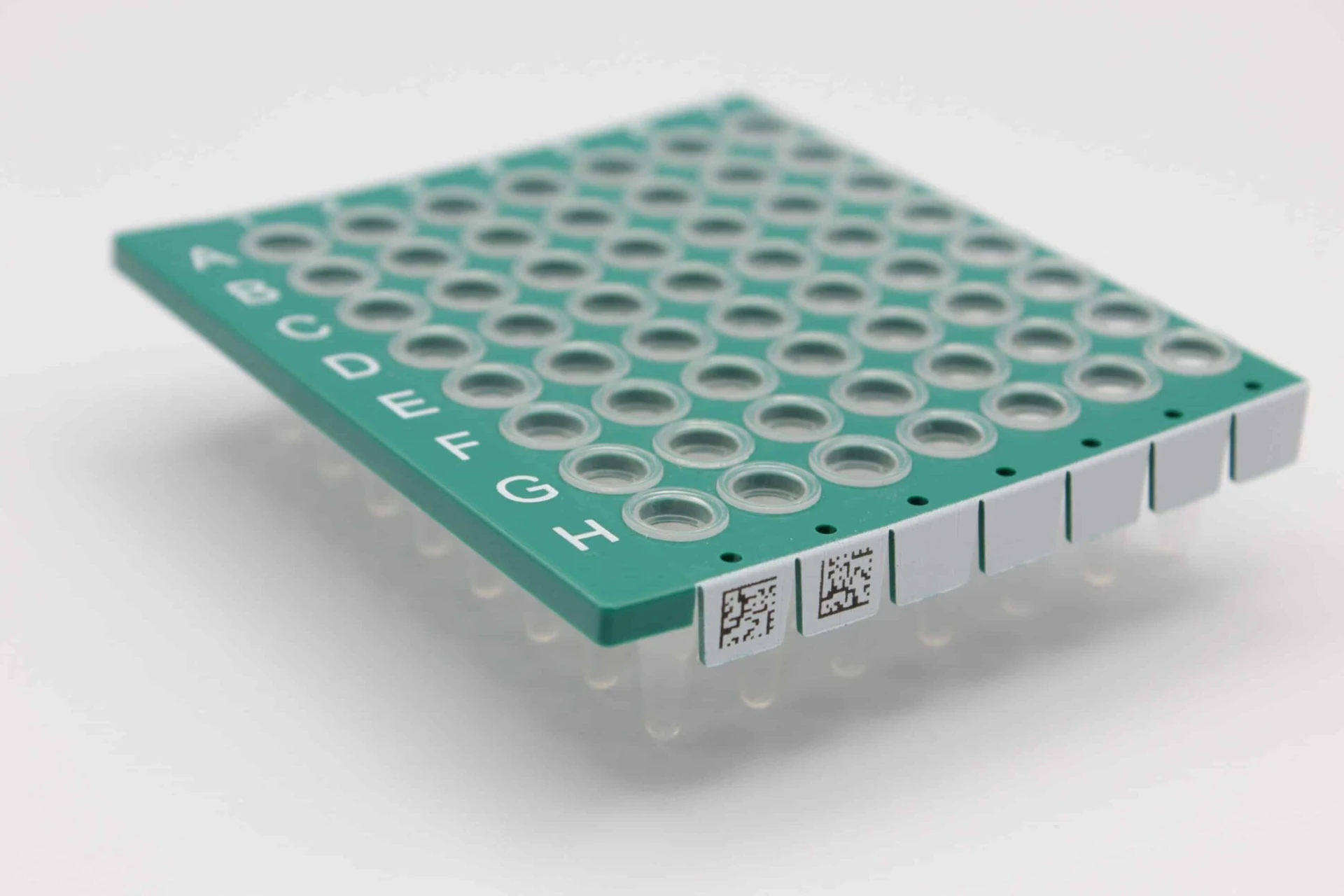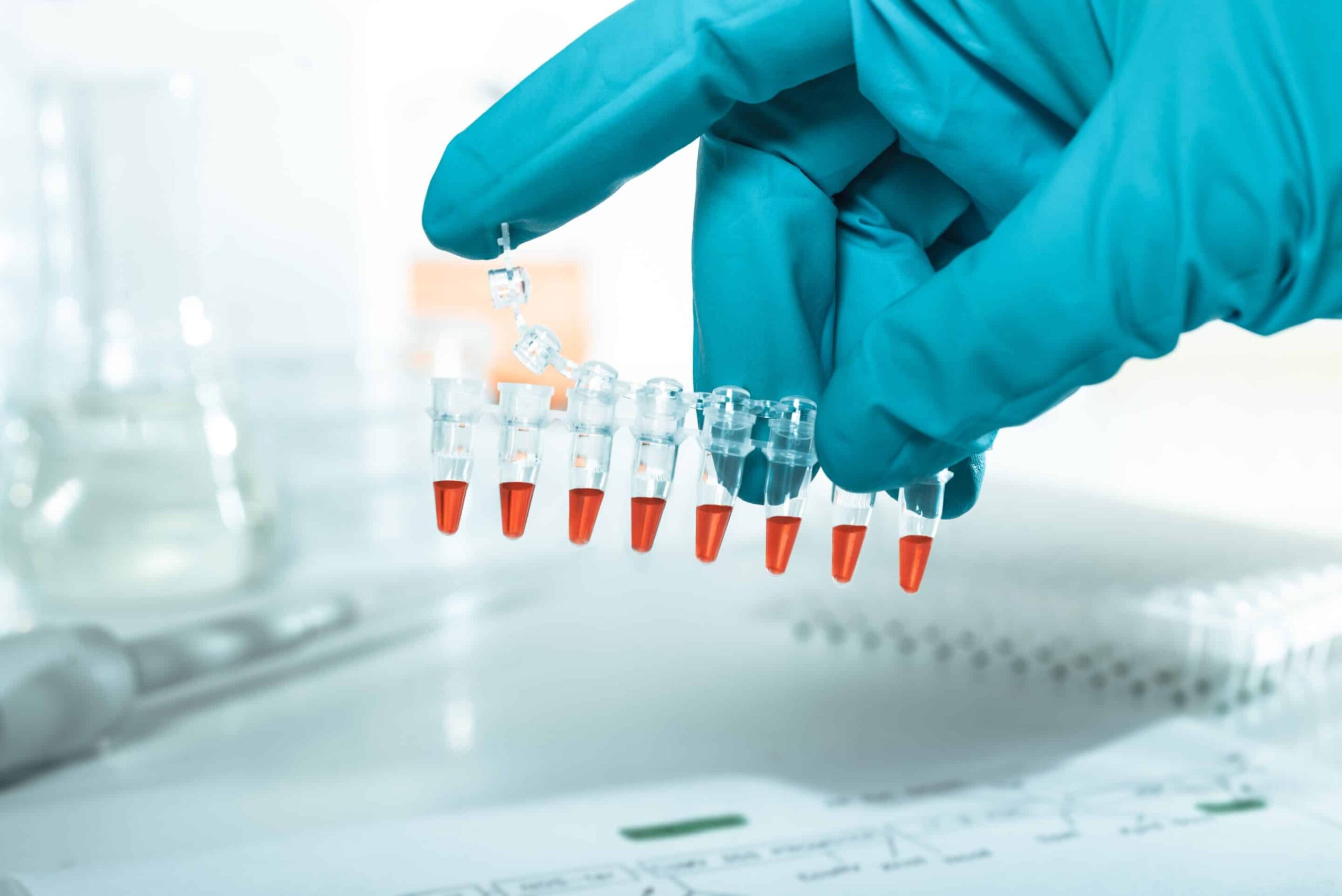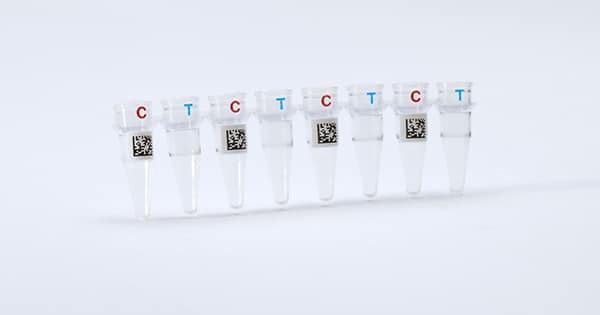Polymerase Chain Reaction (PCR) is a cornerstone technique in both research and diagnostic settings, enabling the amplification of DNA sequences with high precision. However, amidst the intricacies of PCR lies a fundamental challenge that scientists and lab technicians grapple with daily: effectively labeling and identifying the minuscule labware used in these procedures. 0.2 mL PCR tubes and strips present unique obstacles for conventional labeling methods. In this article, we delve into the complexities of labeling and identifying labware for PCR, exploring the challenges laboratories face and the potential alternatives and solutions available. Whether you’re a seasoned researcher or a laboratory technician navigating the intricacies of PCR experimentation, understanding the nuances of labware labeling is essential for optimizing efficiency and accuracy in scientific workflows.
Current challenges with traditional labeling in PCR
Amidst the rapid advancements in PCR technology, researchers are confronted with the persistent challenge of accurately and efficiently labeling PCR tubes and strips.
The conventional approach of handwriting labels, color-coding with markers, or attempting to apply traditional adhesive labels proves inadequate due to the minute size and unique geometry of the labware.
The limitations of traditional methods become particularly evident when grappling with the minute size and intricate geometry of the labware, emphasizing the critical need for innovative labeling solutions in the evolving landscape of PCR research.
Size and Geometry
0.2mL PCR tubes and strips pose significant hurdles for conventional labeling methods. The limited surface area of these tubes restricts the space available for labeling, and the unique shape of connected tube strips make them difficult to manage. Attempting to handwrite labels on such diminutive labware becomes a delicate and time-consuming task, prone to errors and inconsistencies. The impracticality of wrapping labels around PCR strips further exacerbates this challenge, leaving scientists and lab technicians increasingly frustrated.
Handwriting
Handwriting labels directly onto PCR labware with markers seems intuitive but again proves impractical due to the minute size of the tubes. The limited surface area restricts the amount of information that can be conveyed, often reducing labels to mere numeric codes or abbreviated identifiers. Moreover, handwriting poses inherent risks of illegibility, smudging, or fading, exacerbated by the necessity for precision in laboratory environments.
Adhesives
Attempts to utilize adhesive labels as an alternative to handwriting are met with their own set of challenges. Affixing labels around PCR tubes or strips requires dexterity and precision, tasks made more cumbersome when wearing gloves in laboratory settings.
The confined space and intricate nature of the task require a level of dexterity that can be mentally and physically taxing, contributing to the overall complexity of the labeling process.
Limited Data and Traceability
Furthermore, the perceived simplicity of traditional labeling methods further diminishes when considering the high throughput nature of PCR. Laboratories often handle large volumes of samples simultaneously.
Relying only on basic handwritten identifiers hinders traceability, potentially leading to the loss or misinterpretation of data. The cumulative effect of these challenges can impede workflow efficiency, delay timelines, and introduce opportunities for errors or inaccuracies.
Exploring effective alternatives for labeling PCR tubes and strips
Many scientists and laboratories facing the frustrations of labeling and identifying PCR labware may believe that the unique size and shape of the tubes and strips pose insurmountable obstacles. The limitations of traditional methods may lead them to assume that no viable alternative exists. However, it is crucial to recognize that innovative solutions are available to address these challenges effectively.
In the quest to overcome the challenges associated with labeling and identifying PCR labware, two standout solutions have emerged: the integration of 2D/Data Matrix barcodes and the utilization of pre-labeling with advanced barcoding technology. These innovations offer laboratories a pathway to enhance efficiency, accuracy, and traceability in PCR workflows, addressing the frustrations posed by traditional labeling methods.
2D Data Matrix Barcodes
2D Data Matrix barcodes represent a significant advancement in labeling technology, offering a compact and data-rich solution for identifying PCR labware. Unlike traditional linear barcodes, which can only store limited information, 2D/Data Matrix barcodes can encode a wealth of data in a small, square matrix. This includes alphanumeric characters, numeric sequences, and even binary data, making them ideal for encoding sample identifiers, experiment parameters, and other relevant information.
Implementing 2D Data Matrix barcodes on PCR labware revolutionizes data tracking, offering laboratories unparalleled traceability and efficiency. By scanning the barcode with a compatible reader, scientists can instantly access comprehensive information associated with each tube or strip, eliminating the need for manual data entry and reducing the risk of errors. This streamlines laboratory workflows accelerates data analysis and enhances the reproducibility of results.
2D barcodes can be implemented either as adhesive labels applied to tube caps or pre-marked directly onto the surface of labware. Adhesive 2D barcode labels can still be difficult to handle due to their small size; however, some of these labels are available in a connected format to match PCR strips for easier application. Ultimately, pre-barcoded PCR labware eliminates all challenges of illegibility, smudging, and limited data capacity associated with these conventional approaches.
Pre-Labeled PCR Tubes and Strips
Marking PCR labware with advanced barcoding technology represents a proactive approach to addressing labeling challenges from the outset. This method involves applying permanent barcodes directly to the surface of PCR tubes or strips using specialized marking techniques, such as laser etching or directly marking with cured inks. Unlike adhesive labels, which can degrade over time or detach during PCR procedures, pre-labeled barcodes are integrated seamlessly into the labware, ensuring durability and reliability throughout experiments.
The advantages of pre-labeling with advanced barcoding technology extend beyond mere identification. Laboratories can supplement their barcode labels with numeric identifiers, alphanumeric codes, or even color markers tailored to meet their specific requirements. This level of customization enables laboratories to encode a wealth of information onto each tube or strip, enhancing traceability and facilitating data management. Furthermore, pre-labeling eliminates the need for manual labeling tasks, saving time and reducing the risk of human error.
Barcoded PCR Strip Examples
While transitioning to pre-labeled PCR labware may necessitate an adjustment for some laboratories, the benefits are undeniable. By embracing this innovative approach, laboratories can optimize operations, save time, reduce errors, and enhance the quality of their research endeavors. With clear, precise markings applied directly onto the labware surface, pre-marked labels eliminate the clutter and inconsistency often associated with handwritten labels or adhesive alternatives. These clean and easily readable labels enhance the usability of PCR labware, ensuring that critical information remains accessible and legible throughout the PCR process.
Furthermore, the customization options afforded by pre-marking, such as DNA sequence labels or numeric identifiers, empower laboratories to tailor labware to their specific needs, enhancing efficiency and accuracy.
By incorporating clear and possibly colored pre-marked elements, PCR labware becomes not only easy to read but also intuitive to use, streamlining workflows and optimizing research outcomes.
Additionally, the increased data capacity associated with pre-marked labels allows for the association of rich data with each individual sample, further enhancing traceability and data management capabilities. Through precision, reliability, and enhanced traceability, this approach empowers laboratories to navigate the challenges of PCR experimentation with confidence, fostering advancements in scientific research.
Connect with our labelling experts today
Blog article form
"*" indicates required fields



